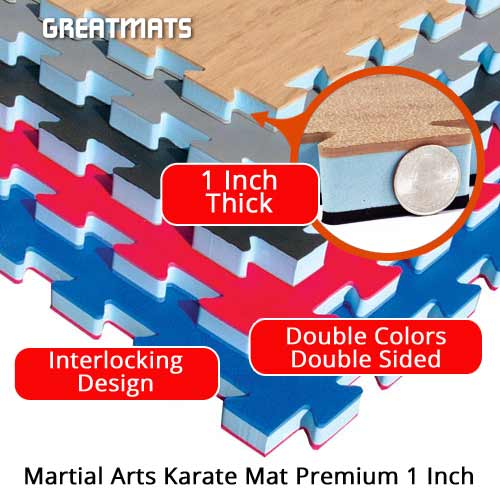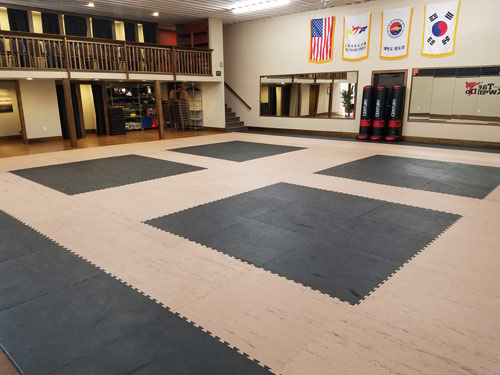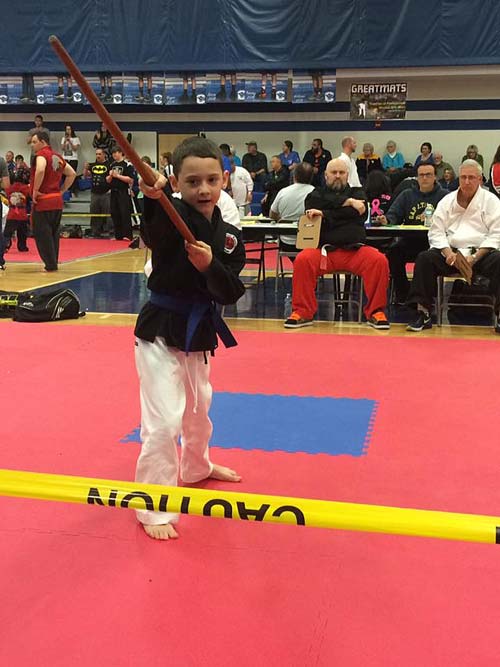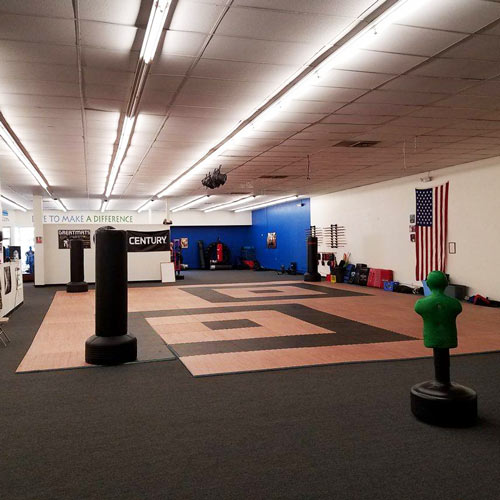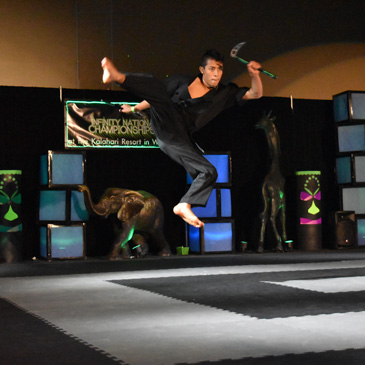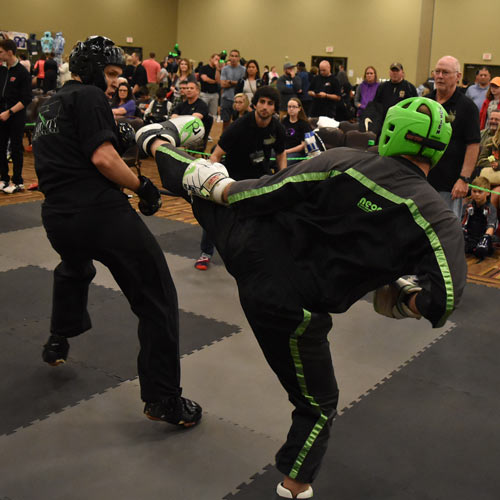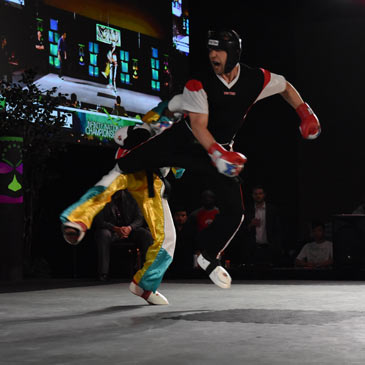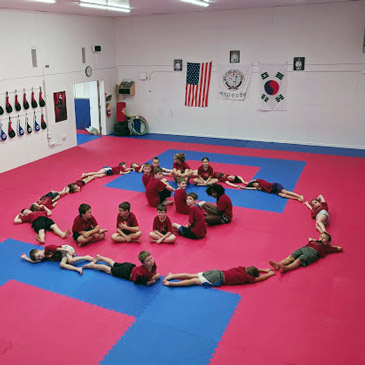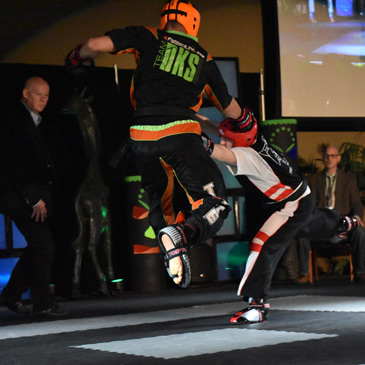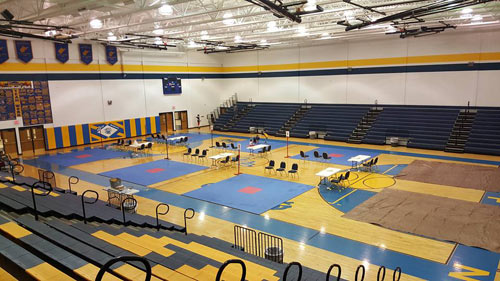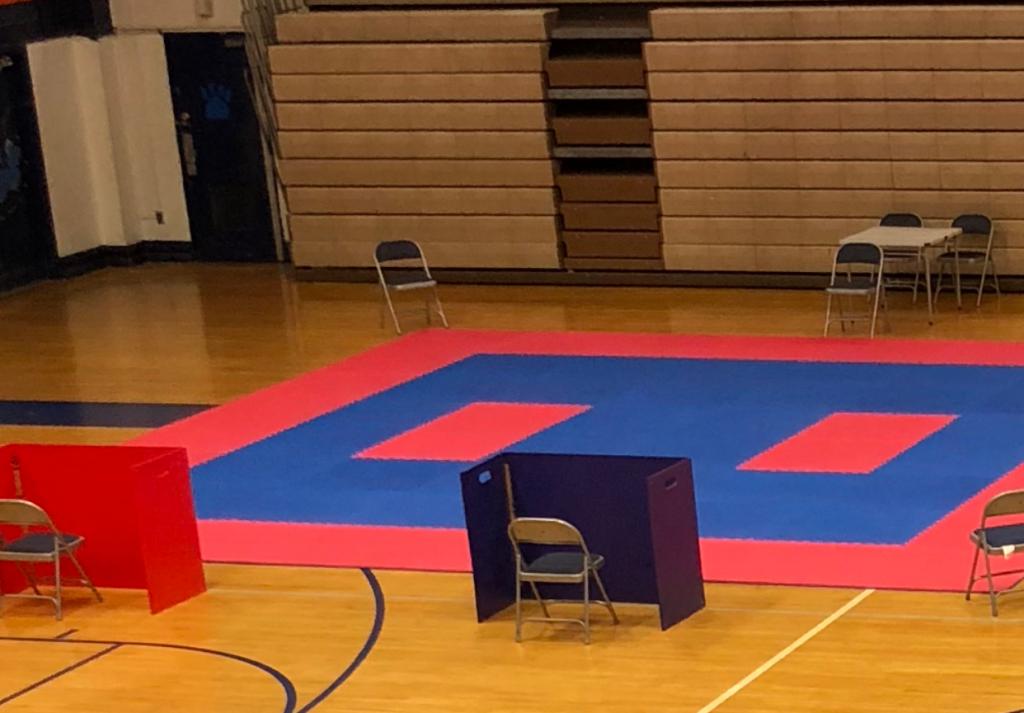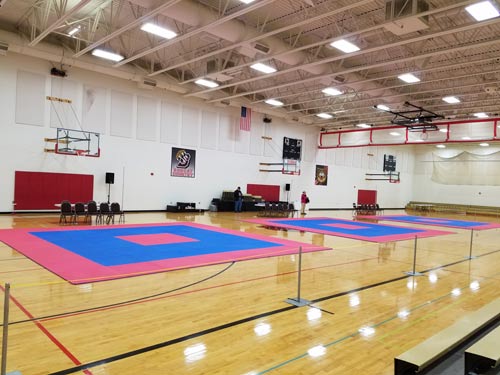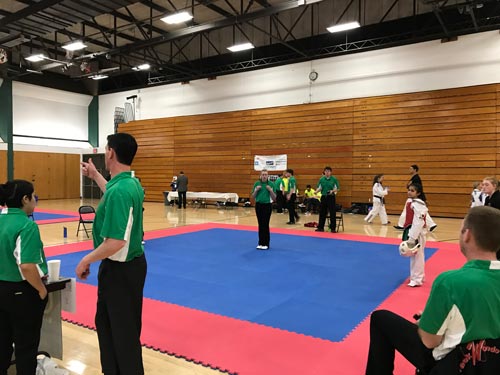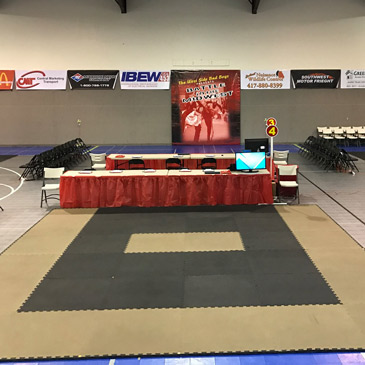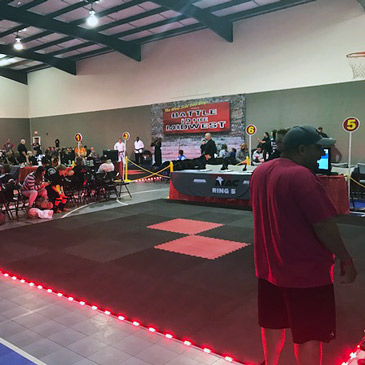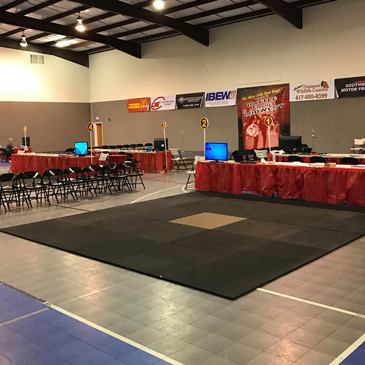Karate Ring Mat - Martial Arts Training and Competition Area
Related Product: Martial Arts Karate Mat Premium 1 Inch x 1x1 Meter
You’ll find that exact combination in our Martial Arts Karate Mat Premium 1 Inch. These 1-inch-thick mats are made of firm polyethylene and ethylene vinyl acetate foams, and they provide the stability that your students need when stretching, jumping, and spinning. The mats also provide just the right amount of cushion that absorbs the shock of landing a jump or a kick, as well as the occasional fall. This cushion can help to minimize potential injuries, allowing your students to train and compete with confidence.
The mats also provide the texture you want in your martial arts rings. They feature a leather surface that’s ideal for use with bare feet. That carefully-developed surface texture lets athletes spin without creating excessive slip. The result is that martial artists can better maintain control when training and competing. The leather surface is also durable enough to withstand athletic shoe traffic, making your martial arts ring a versatile space.
As your mats see plenty of use and start to get dirty, you can damp mop them with hot water for a thorough cleaning. To wipe up spills or sweat, use a dry towel, and spot-clean the mats with diluted vinegar or Dawn dish soap. You can also regularly use a vacuum – just be sure to test the vacuum in a small area to make sure it won’t damage the mat.
Installing a Karate Ring
If you want to create a karate ring or competition area, these mats are designed to be easy to install. The convenient karate mat size of 40 by 40 inches is easily maneuverable, and you can create a 6x6 meter competition area with 36 karate mats. You can also add a 1-meter safety area, ensuring you have everything needed for both training and competition. The safety area and your ring will use about 64 mats.These mats are dual-sided with different colors on each side, so you can flip them over to create visual boundaries and patterns. Consider using one color for your ring and a second color for your safety zone for easy recognition.
Installing the mats is easy. The puzzle interlocking design means you can easily connect the mats, creating a solid surface. You can dry lay them on a flat surface, with no need to worry about adhesives. To install them, start in one corner of the area you want to cover and work your way out, adding tiles as you go. The seams create strong closures and won’t pull up as martial artists train or compete.
If you’re performing a temporary installation, you can pull the mats up again once you’re done, perfect for instances where you’re hosting a competition on a rented property. If individual tiles get worn or damaged, you can replace just those specific tiles, saving you the cost of replacing larger amounts of flooring. Each tile also comes with four border strips, allowing you to create an island installation with clean edges.
Many martial artist of different disciplines have found that these mats are perfect for their needs. Click on the name of each school below to see what they have to say about their mats.
Boxing
413 Fitness
Cardio Kickboxing
Farrell's Extreme Bodyshaping
Capoeira
Allied Capoeira League
Hybrid & Mixed Martial Arts
Dragons Den Mixed Martial Arts (Shotokan Karate, Renzoku Jiu Jitsu, Dragon Kenpo, Judo, Kobudo, Arnis, Aikido)
Tysons City Boxing (Muay Thai, MMA, Boxing, Grappling, Taekwondo, Karate)
Treger Studio of Martial Arts (Shudokan Karate, Tae Kwon Do, BJJ)
Krav Maga
Fayetteville Krav Maga
Shotokan Karate
The Woodlands Shotokan Karate
Silat
Silat Martial Arts Academy
Sport Karate
Infinity Martial Arts & Infinity National Championships (plus Kung Fu)
Shen Dragon Karate Dojo (plus Krav Maga & Kickboxing)
USA Karate (plus yoga)
Taekwondo
Brookings Tae Kwon Do (plus karate, judo, hapkido & self defense)
Stockbridge Tae Kwon Do Academy (plus hapkido and bjj)
West Omaha Martial Arts
Tang Soo Do
Brandywine Martial Arts Academy
Texas Tang Soo Do Academy
How big is a karate ring?
According to the North American Sport Karate Association, adult black belt rings should measure about 20 by 20 feet. Each ring should have starting lines in the middle that are approximately six feet apart. The size of youth and rings for levels beneath the black belt can range from 16 to 20 feet.How does karate differ from taekwondo?
While karate and taekwondo are both martial arts, there are some key differences between them. Both karate and taekwondo provide a full-body workout, and they’re rooted in discipline. You’ll learn the fundamentals of each martial art, including stances and how to kick, block, and move during a fight.These martial arts differ in their focuses, though. With karate, your legs stay grounded more, and hand attacks are more emphasized. Kicks are used as a backup to your hands. With taekwondo, you’ll perform more kicking, and your hands assume more of a backup role. Jumping and spinning are also more common in taekwondo than they are in karate.
How long is a karate match?
The North American Sport Karate Association states that matches run for two minutes, unless a competitor is seven points ahead before the match time ends. If the match is tied when those two minutes end, then an overtime period will run until a competitor scores a point, deciding the match’s outcome.